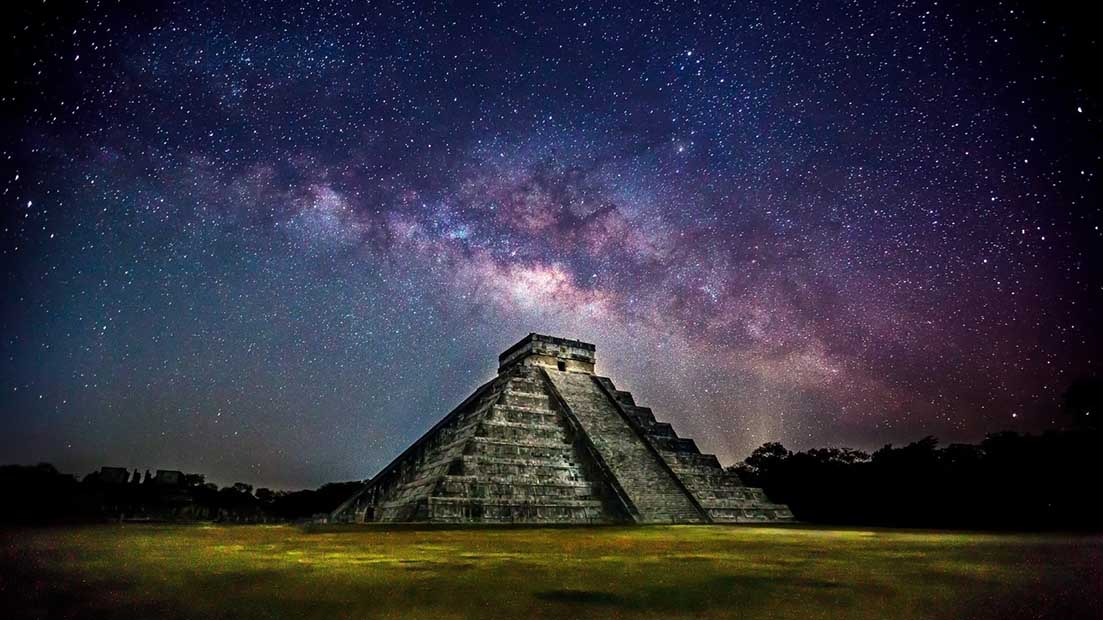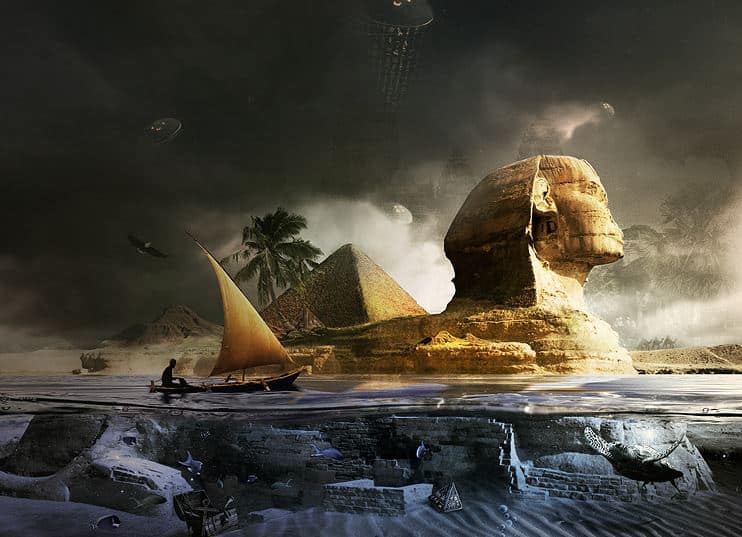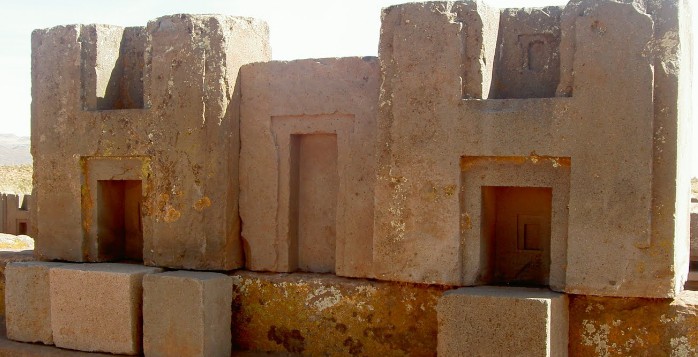
YouTube Video Here: https://www.youtube.com/embed/UpLcnAIpVRA?feature=oembed&enablejsapi=1
It seems that by nature we tend to discredit our ancestors for many things. We can firmly state that Ancient mankind was incredibly developed, smart and achieved things that we today cannot replicate. Proof of that are incredible lost technologies, ancient monuments that defy every explanation and knowledge about complex sciences way ahead of their time.
In this article, we bring you our top ten ancient achievements which scientists and researchers simply cannot explain.
Puma Punku and Tiahuanaco: As Incredible as it gets

We start off with one of our favorite ancient cities. Tiahuanaco and Puma Punku. Located about 45 miles west of modern day La Paz, high in the beautiful Andes Mountains lie the mysterious ruins of the ancient city of Puma Punku. The megalithic stones quarried by ancient man are among the largest ever found on the planet, and some of them measure up to 24 feet in length, weighing around 100 tons. The massive stones were hewn from quarries over 60 miles away according to archeologists. Tiahuanaco is probably the greatest Native American civilization that many people haven’t heard of. It’s said that Tiahuanaco displays all the races of mankind, even elongated skulls, people wearing turbans, people with broad noses, people with thin noses, people with thick lips, people with thin lips, and some of the statues are particularly unusual and are unlike the ones found in the nearby area. Mainstream scholars believe the blocks found at Puma Punku were formed by hand with primitive stone tools. But some researchers point to the intricate stonework as evidence of the use of advanced precision technology.
Ollantaytambo: Ancient Megalithic Engineers

Located in southern Peru, around 45 miles northwest of the city of Cuzco lie the remains of the ancient city of Ollantaytambo. Located at an altitude of 2,792 meters (9,160 feet) above sea level, Ollantaytambo lies in an area the Inca people once called the Sacred Valley and this marvel of architecture once served as both a temple and a fortress, Mainstream historians claim Ollantaytambo was built around 1440 AD by the Inca Emperor Pachacuti. Archeologists today, believe Ollantaytambo was built upon the ruins of a far older city and they are not sure of the origins of that city. Ollantaytambo is a marvel of engineering and architecture, it is a fortress, and complex city and many questions have been raised throughout history regarding the construction of this ancient site. Today one of the most asked questions probably is in regard to the incredible sized blocks of stone that were used in the construction.
Some of these over-sized rocks are found at the highest levels of Ollantaytambo, particularly six of these monoliths that are placed in a line, according to researchers they were brought to Ollantaytambo from another mountain, across the plain, river and then they were brought up the mountain.
The Nazca Lines: Blueprints of the gods?
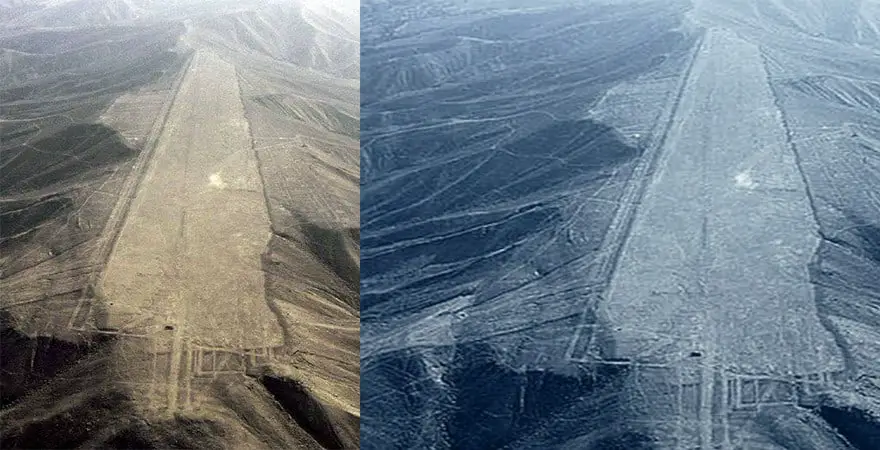
What is the exact purpose of the Nazca Lines? Were these intricate shapes some sort of ancient blueprints? Markers? Were they ancient runways as some suggest? Or were they ancient art, left behind by a long lost civilization that once inhabited the region? The truth is we don’t know. The largest figure found at Nazca is approx. 1000 feet and the longest one goes for 9 miles. Why Nazca? How were they built? To what purpose?
According to archeologists, these mysterious drawings were created by the Nazca people, they flourished in the region between the 1st and 8th century A.D.
The lines were formed by the careful removal of the reddish iron-oxide pebbles that make up the desert surface. Once exposed, the underlying dirt, which contains high amounts of lime, hardened and resistant to erosion. Some of the parts of Nazca have amazing designs highly accurate triangles that are a mystery. Some of the triangles look like they were made by something that literally pressed the ground down at least 30 inches with incredible force, now could the ancient Nazca have done this? With their feet? How would you press down a six-mile “perfect” triangle into the desert?
The oldest temple in the world: Göbekli Tepe?
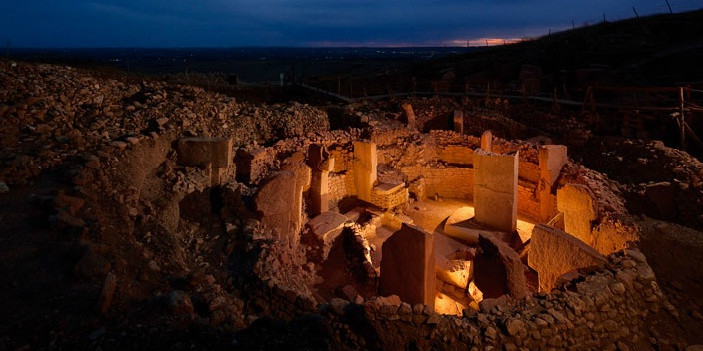
Located 2500 feet above sea level, and hidden at the top of a mountain ridge in the Southeastern Anatolia Region of Turkey, some 15 kilometers (9 mi) northeast of the town of Şanlıurfa is the Neolithic sanctuary of Göbekli Tepe. The discovery of the Neolithic site was made in 1993 by an old Kurdish shepherd named Savak Yildiz who discovered Göbekli Tepe who thought he had spotted something and brushed away the dust to expose a large oblong-shaped stone. Many researchers believe this ancient sanctuary is nearly 12,000 years old and that’s almost 7,000 years older than Mesopotamia’s Fertile Crescent, long heralded as the cradle of civilization. After 13 years of digging, archeologists investigating the ancient site have failed to recover a single stone-cutting tool. They found any agricultural implements. So how can you create these 19-foot-tall, perfectly sculpted columns that are 11,000 to 12,000 years old, and not find any evidence what so ever of tools user to accomplish this?
The Antikythera Mechanism: An Ancient Computer
It is considered as one of the most incredible ancient devices ever discovered on our planet. The Antikythera mechanism, is according to researchers around the world, a product of ancient Greek ingenuity, and there is no other instrument like it, nothing found until today compares to the Antikythera mechanism and better yet, there are no recorded texts that would suggest that something like it ever existed. The device was discovered by chance, as a storm deviated a group of divers in the 1900’s.
They reached the island of Antikythera between Peloponnese and Crete and while diving, they discovered the remains of a Roman ship that sunk around 65 B.C. Inside the wreckage, this mysterious device was discovered. The Antikythera mechanism is basically made out of wood and bronze. Its dimensions are 31.5 centimeters in length, 19 centimeters wide and has a thickness of 10 centimeters. Researchers believe that the system of gears was protected by a wooden box, which is now almost totally destroyed. The device had two doors, one at the front and one at the back with astronomical inscriptions covering most of the exterior of the mysterious mechanism.
Sacsayhuaman: An Ancient Alien fortress?
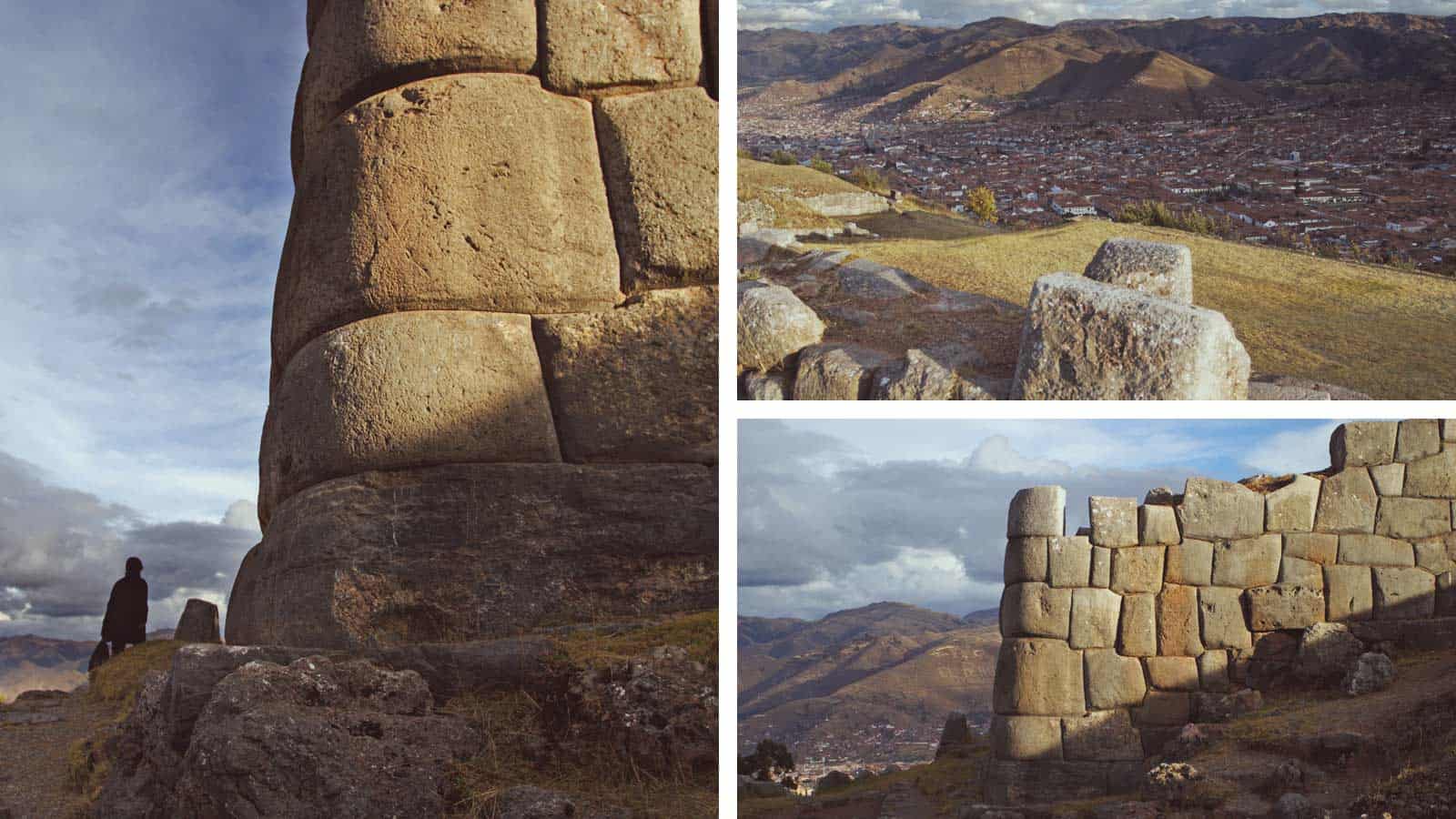
This ancient site is compared in magnitude to other ancient sites like Puma Punku or Tiahuanaco. The ancient fortress of Sacsayhuaman is believed to hold secrets which predate the Inca themselves, it is an ancient site filled with mystery and magic, and offers more questions than we are able to answer.
Interestingly, this ancient megalithic complex dates back, at least, a millennium, making it one of the oldest ancient establishments on the planet, yet few of us know of its existence. The builders of this ancient site left behind precisely cut blocks of stone that have challenged our modern-day builders in many ways. Just like we see at Puma Punku, we find that the ancient builders of Sacsayhuaman had the technology to quarry giant blocks of stone, move them to the site where they wanted to build and then stack, cut and articulate these massive blocks into– what are in some cases almost indestructible structures, so this is really impressive.
The Great Pyramid of Giza: The most mysterious structure on Earth

I believe most of you will concur if we say that the great Pyramid of Giza is one of the most mysterious (if not the most mysterious) structure standing on the planet today. While many questions remain unanswered about the Great Pyramid of Giza, we still remain perplexed by the complexity and precision of this incredible ancient structure. Today’s researchers are completely unable to answer some of the greatest enigmas surrounding this antique monument that has baffled researchers, historians, and tourists alike. The fact that The Great Pyramid is the most accurately aligned structure in existence and faces true north with only 3/60th of a degree of error is something mind-boggling.
Not only is the Great Pyramid one of the most accurately aligned structures on Earth, there are numerous other details about it that are even more incredible. The four faces of the pyramid are slightly concave, the only pyramid to have been built this way. Today, we still have no idea who built the Great Pyramid, how, for what purpose and how old the monument is.
The Piri Reis Map: An ancient map created by even older maps

While there are numerous things discovered from ancient mankind’s past, there some discoveries that literally question everything we know about our history. This is the case of the Ancient Piri Reis map found in 1929 during the restoration of the Topkapi palace in Istanbul Turkey. This controversial (ancient) map describes in high detail the geography of the American Continent with such a precision that it looks as if it was put together with the aid of aerial photography. However, the map was made at a time when mainstream history tells us there were no flying vehicles on Earth and mankind’s technology was very limited. The map composed by Ottoman admiral Piri Ibn Haji Muhiddin Memmed, aka Piri Reis, is, in fact, part of maritime navigation collection called Bahriye which is basically composed of 210 partial maps, dated around 1513 and 1528. The perfection and details displayed on the map have been the subject of debate for years among scholars who cannot understand nor explain how this map even exists. Today, numerous enigmas remain about the Piri Reis map, especially with regards to Latin America and the Southern regions of our planet.
Gunung Padang: Older than the ‘oldest’ Pyramid on Earth?

Gunung Padang is surely one of the most controversial discoveries ever made on the surface of the planet. According to reports, we are looking at a lost civilization, an unknown history and breathtaking construction that challenges everything we know about history, rising in Indonesia around 20,000 years ago. According to stamens from Geologist Dr., Danny Hilman could hide the remains of a lost temple that could date back 20,000 years. Hilman believes that the site (Gunung Padang) is of great cultural and historical importance since it contains the remains of a huge Pyramid that was built some 20,000 years ago, by a lost civilization, adding that it may have been built for worship or as a giant astronomical instrument. Like many other discoveries in the past, Gunung Padang has been dubbed by many mainstream scholars as a hoax and nothing more. While studies seem to point otherwise, it seems that the mysterious Pyramid of Indonesia and the 20,000 years old civilization behind it will remain for some time, one of history’s greatest enigmas.
Megaliths of Baalbek: A colossal… mystery
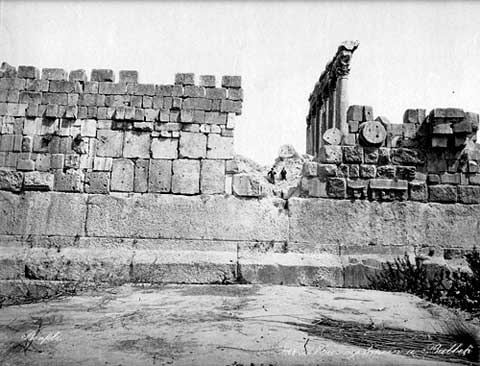
Located east of Lebanon, 86 kilometers northeast of the city of Beirut, in the valley of Beqaa, near the border with Syria lie the ruins of a gigantic megalithic platform that remains as one of the greatest enigmas for researchers who have come to study it. Legends say it is a very sacred place. The temple was built on top of a ruined mound, so even before Greek and Roman times, this majestic place was considered to be holy.
Mainstream archeology has different points of view when it comes to the exact age of the site. According to conventional archeologists, it was a Phoenician sanctuary dedicated to the god Baal, it was a Greek City called Heliopolis (City of the Sun) and since the time of Emperor Augustus, it was a Roman colony. The truth is, the exact age remains a mystery, but some researchers consider this ancient megalithic site as being at least 12.000 years old but could possibly be over 20,000 years old. Among the most intriguing of these megaliths is the Trilithon, and here is the cool part: three colossal blocks measuring 22 meters in length, 4.5 m high and 3.5 m wide. Their weight ranges between one and two thousand tons. These three huge megaliths are positioned on a row of six blocks of granite that measure each, 10 meters in length and 4 height and weighing over 300 tons. Some researchers argue that these megaliths are not “foundation stones” as they have always been declared as it appears as if it was essential that the largest of the stones were position on top, and not at the bottom making the whole edifice become an inverted structure.

